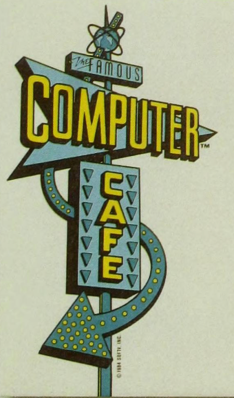You might think that TV stations or production houses would be great at archiving, but it’s not always the case. Particularly from the public access perspective. However, if you’re a fan of The Famous Computer Cafe, you’re in luck! The beloved series has now been preserved on The Internet Archive!
 If you’re not familiar with the show, it was a radio program broadcast from 1983 to 1986. It was pumped out of a variety of radio stations in southern and central California in the period. The creators making sure to keep a copy of each episode in reel-to-reel tape format. For years, these tapes were tragically lost, until archivist [Kay Savetz] was able to recover some of them from a recent property sale. From there, a GoFundMe paid for digitization, and the show has been placed on The Internet Archive with the blessings of the original creators.
If you’re not familiar with the show, it was a radio program broadcast from 1983 to 1986. It was pumped out of a variety of radio stations in southern and central California in the period. The creators making sure to keep a copy of each episode in reel-to-reel tape format. For years, these tapes were tragically lost, until archivist [Kay Savetz] was able to recover some of them from a recent property sale. From there, a GoFundMe paid for digitization, and the show has been placed on The Internet Archive with the blessings of the original creators.
This is quite the cultural victory, particularly when you observe the list of guests on the show. Timothy Leary, Bill Gates, Jack Tramiel, and even Douglas Adams made appearances in the recovered recordings. Sadly, though, not all the tapes have been recovered. Episodes with Gene Roddenberry, Robert Moog, and Ray Bradbury are still lost to time.
If you fancy a listen, 53 episodes presently exist on the archive. Take a trip back in time and hear from some technological visionaries—and futurists—speaking their minds at the very beginning of the microcomputer era! If you find any particularly salient gems, don’t hesitate to drop them on the tip line.


















